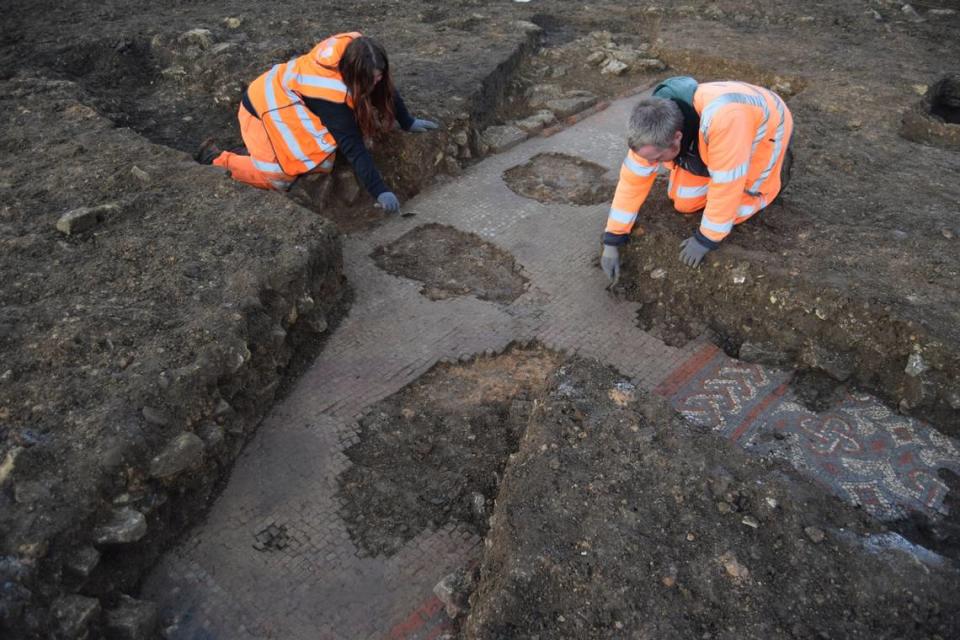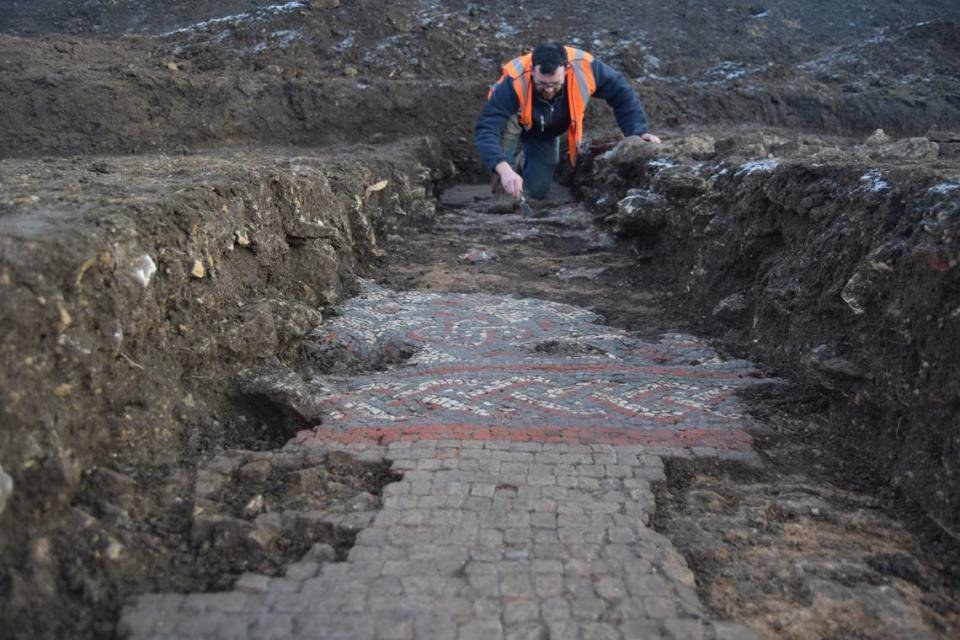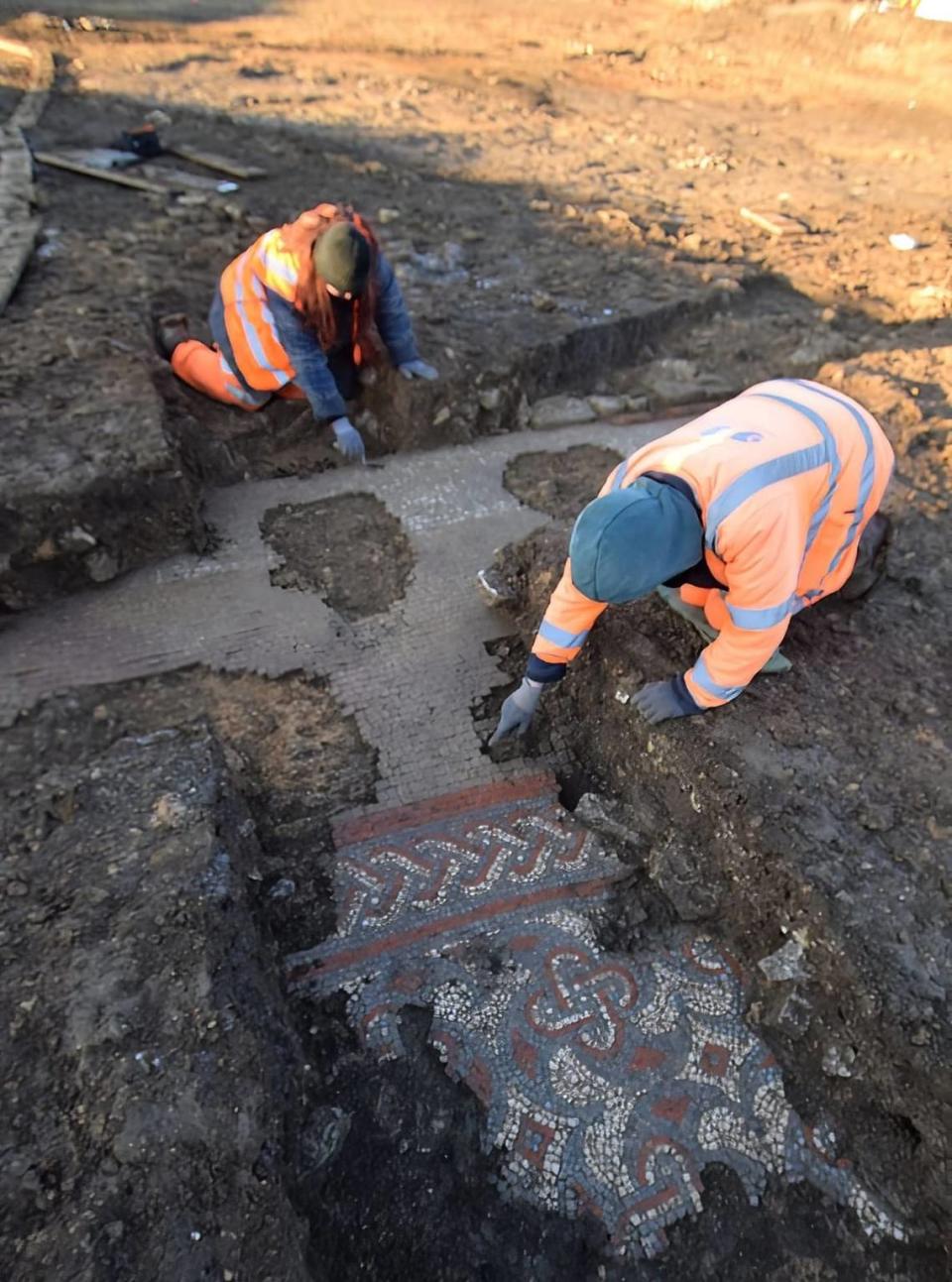Aldi construction reveals Roman ruins with ‘vibrant’ mosaic in UK. Take a look
Digging through the rocky brown soil of the U.K., archaeologists expected something interesting to emerge, but what they found stunned them.
Ahead of construction of an Aldi grocery store, archaeologists began excavations in Olney, Oxford Archaeology said in a Wednesday, March 15, news release. Near the site of the future supermarket stood a known Roman settlement.
Archaeologists unearthed a “high status” Roman structure with two small rooms and one larger room. The building may have been a domus, a type of building where families lived, ran businesses and had religious worship, according to the World History Encyclopedia.
The building’s largest room contained portions of a mosaic floor, the release said. The mosaic is at least 1,600 years old and once covered the entire floor of the room. The tiling along the edge of the room was preserved the best.

Photos show the blue-gray tiling. A braided design composed of delicate red, white and blue tiles runs along a portion of the ruins. Other sections of the mosaic boast a mixture of geometric and abstract shapes.
“We anticipated some notable Roman remains, but the discovery of this fantastic mosaic far exceeded those expectations,” John Boothroyd, a senior project manager with Oxford Archaeology, said in the release.
Archaeologists described the “beautiful” mosaic as having “vibrant” colors and “intricate decorative patterns.”

The Roman empire controlled parts of the U.K. from 43 A.D. until 410 A.D., according to Britannica. Archaeologists have not provided a more specific estimate for the age of the ruins.
Anthony Williamson, the executive director of the site’s developer, Angle Property, said in the release that “the mosaic find is amazing and has taken us all by surprise.”

Excavations also uncovered several stone structures. Archaeologists identified these as either portions of a Roman bath house or cisterns for water collection.
After consulting with the local city council and cultural authorities, archaeologists proposed a plan to preserve the mosaic in its original location, the release said. The mosaic surface has been covered with a protective material to prevent additional weathering.
Olney is about 55 miles northwest of London.
Treasure-filled tombs — 12,000 years old — exposed by drought in China, photos show
Seashells in the desert? 3,600-year-old community collected them for a reason
Unearthed desert chamber held remains of 7,000-year-old rituals from ancient Arabia

